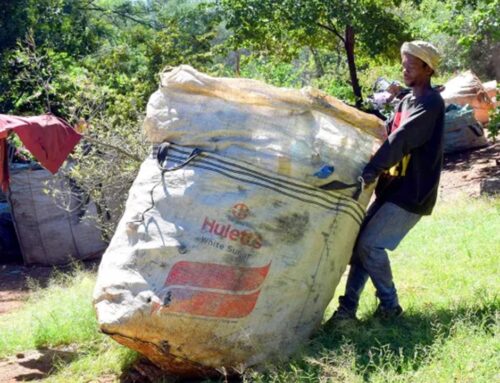Whether you are traveling through a desert region, or you decided for a safe and planned trip in such a climate, you still have to consider all the possibilities, and something going awry when you least expect it is one of those possibilities. Never eliminating the bad scenario is logical thinking. That is the reason we always have to prepare ourselves for anything that nature might throw at us.
One of the most dangerous circumstances that you can find yourself in, and one of the toughest climates on earth is the desert. Being stranded in a desert surrounding offers only the slimmest of chances for survival. This is why you want to do everything to make certain that you are perfectly prepared to survive. If your trip to a desert is planned out and follows an established route, you’d still have to prepare yourself for what might happen. It is the unpredictability of such climates that dictates that you must study your means of survival beforehand. So don’t hesitate to dust off your survival books and learn as much as you can about the area you are visiting. For now, here are some basic tips to take into account and remember – always consider the dangers our surroundings can bring.
- Proper clothing is a vital element when facing the scorching heat of a desert. In these climates, with blistering heats of daylight, and sub zero temperatures of the night, clothing is essential and needs to be adaptive to suit both situations. If you can choose what you will wear – opt for something light and loose, ensuring enough coverage of the body, while allowing air circulation between. Avoid tight fitting clothes. Your clothing will provide crucial protection from sunburn. Sunburn can be a deadly threat in the desert and you want to make sure as little as possible of your skin is exposed to daylight sun. Another thing to remember is that sweating can help by cooling you down and lowering body temperature. If you expose your skin the sweat evaporates resulting in loss of vital fluid.
- The equally crucial piece of clothing is headgear. Your head needs to be protected at all times from the deadly heat. Depending on what you have, you might need to improvise. Create a neck cover from a piece of cloth, protecting your exposed neck and upper back. You can also mimic the headgear common to desert natives, study their tips and lifestyle beforehand. Don’t forget to protect your eyes. The glare from the afternoon sun can be hampering and damage your sight. Sunglasses are the basic protection, but in case of sandstorms or strong winds, fashion a cover from cloth, with means to see through.
- When heat becomes too high you will need to minimize your activity during the day. This will slow your progress but will keep you out of the deadly temperatures. If you feel a loss of energy due to heat, try to find some shade and rest for a while, as you will need to minimize the loss of fluid. It’s likely no shade will be available in the desert, so try to hide in natural shadow behind a high dune, or if you packed tarp or similar material – fashion a simple lean-to to keep you cool as you rest. Light fires only at night. Know that fuel for fire is scarce in a desert, so try to find dry and brittle desert bushes to provide as firewood.
Finding food in the desert can be a difficult task since vegetation is scarce and wildlife burrows and hides during the day. Ration your own supplies of food and water and never consume more than your basic necessities. If you got the means you can attempt to hunt for small rodents and mammals, but also insects that can be found. In a case that you spot large mammals, this could signify a water source close by so always be on the lookout.
Finding water is the number one priority in these surroundings. Your own supplies need to be rationed to last as long as possible. Remember to study local maps and signs to know where there are wells and waterholes and if you can reach them in time. If you spot vegetation, this is a sure sign of water. Try to dig in this place while minimizing your strain; you don’t want to lose too much fluid in the process.
Finding safety is the third crucial step you need to take to ensure you leave the desert safely. Providing you took care of your sustenance for the time being, the next logical step is getting the hell out of there. If you came prepared, you should have a map of the area and a compass with you. Use these as orientation to get your bearings and determine the way towards the first safe place. Calculate your cross country capabilities – how much miles can you cover in the blistering daylight heat? Once you come to an estimate, calculate in what time you can cross the distance needed to reach safety and commit to the set values.
In the case you don’t have a map or a compass (although you should always carry a compass at least) there are natural means of orientation in nature. Here we will mention a couple and their basic use.
1. Orientation by the stars can be the logical means of navigating we all heard about. Like the iconic navigation by the North Star. The Pole star can also be a useful aid as it is located above the polar north. To determine its location we could rely on several star clusters that circle the pole star. One of these is the Big Dipper that most of us can easily spot in the night sky. The two lowest stars in the Big Dipper constellation point to the Pole Star.
2. Orientation by improvised compass is a ultimate useful skill to know. In case you lack a compass, you can improvise with a sewing needle, or a small piece of metal wire. To do this, take the needle and rub it against your clothes, or preferably silk material. This will in turn magnetize the needle, so if you suspend it from a thread it will point due north. A better known method is taking the magnetized needle and placing it on a piece of paper or tree bark and placing that in some water. The needle will point north.
3. Orientation by wrist watch is another useful tip. Provided you have a wrist watch, it can potentially aid you in navigating. In the northern hemisphere, point the smaller, hour hand at the sun. The middle of the angle between the 12 and the hour hand will indicate the north to south line. If you are in the southern hemisphere on the other hand, point the 12 hour to the sun. The center point between the 12 and the hour hand will indicate the north to south line.
Writing these short, basic instructional articles, we can all come to a single conclusion. That no matter where you’re headed, and no matter how safe that place is, you still want to come prepared. Nature is unpredictable. Nature is harsh. If caught unprepared and unequipped it could get the better of us. So we can all agree that preparing yourself is crucial – study the surroundings you are heading into, read tips and tricks, and guides to surviving. Pack the essential tools and extra food and clothing. Never hesitate in these matters as it could mean your life.
And we hope that this basic list of useful tips and things to know, could come in handy when the time comes!





Leave A Comment